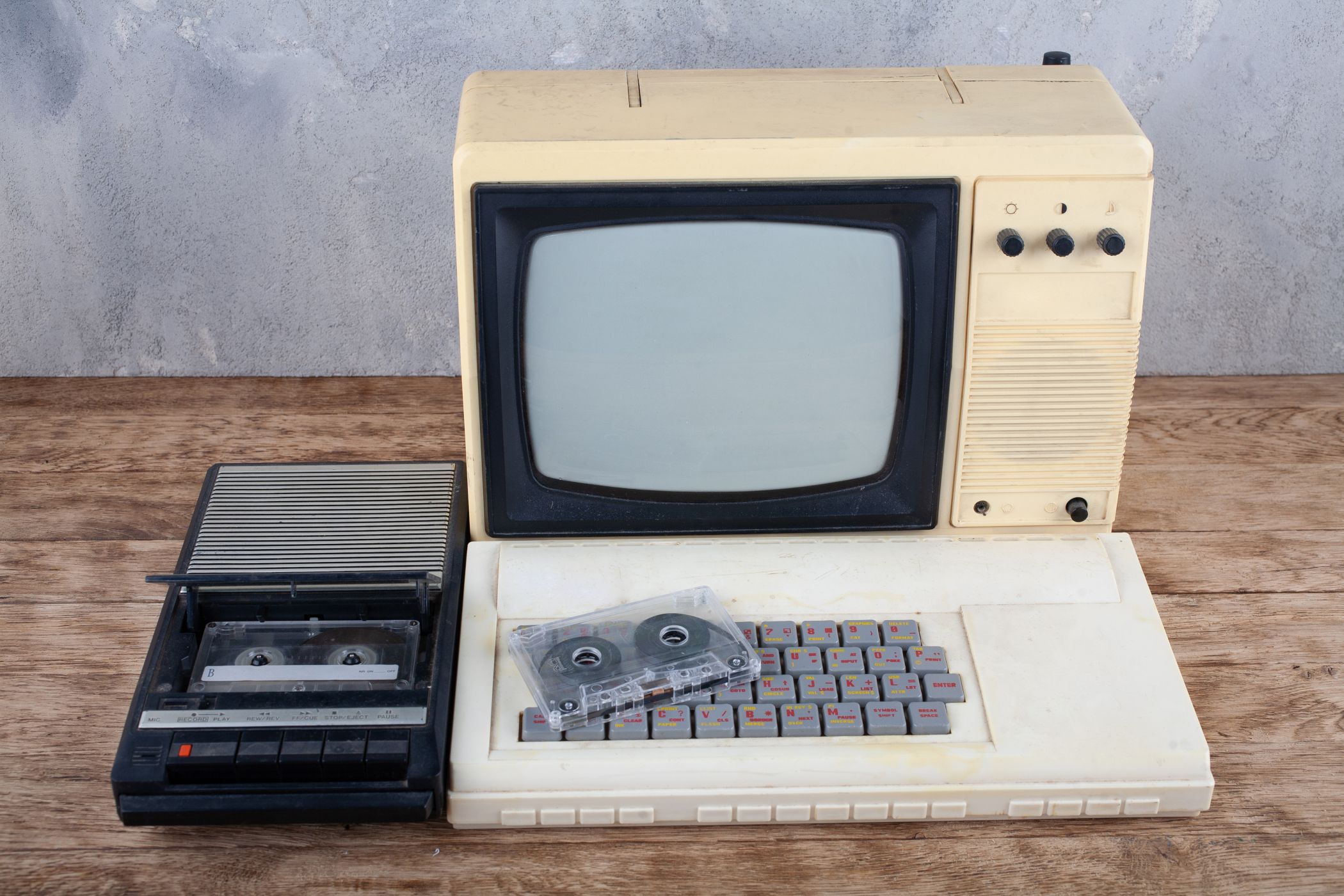You might only think of cassettes as a slightly worse (or better, depending on who you ask) way of consuming music than vinyl records, but they were a crucial storage alternative to floppy disks in the early days of computing.
How Early Computers Using Cassette Tapes Worked
Using a cassette tape, typically associated with music, to store computer data might seem bizarre, but the principle was remarkably straightforward.
Data on these cassettes was stored as analog audio signals. The computer would convert digital information into audio tones, often sounding like a screeching noise to the human ear. These tones could be recorded onto a standard cassette tape using a regular tape recorder. Yes, the same thing modems did over our phone lines, leading to that tell-tale modem noise.
To load data, the process was reversed. The computer would read the audio tones from the cassette, interpreting them as binary data. This binary code would load programs, games, or other content. But why even adapt cassettes for this purpose?
Cassette Players: A Universal Bridge to Computing
Most early computers that utilized cassette tapes for storage were designed to be compatible with standard cassette players. Whether it was a top-of-the-line model or a more basic one, chances are it could be hooked up to a computer like the ZX Spectrum or Apple II. This compatibility wasn't limited to specially designed computer accessories; ordinary audio cassette players often did the job. As long as they had the required fidelity and line-out jack.
There are some exceptions, such as the Commodore 64's Datasette, which was not a standard tape deck, and therefore, you had to use a Datasette or a Datasette clone or (later) aftermarket converters with the Commodore.
A Wallet-Friendly Solution
Back in the '70s and '80s, computing was an expensive hobby. The available storage options, like floppy drives, were more than just pricey. They were mammoth-sized in comparison to today's compact devices. Enter the humble cassette tape - an affordable and widely accessible medium.
Cassette tapes provided a way to store data without breaking the bank. Anyone who owned a music player likely had a collection of cassette tapes, and thus, the infrastructure was already in place. This made it an attractive option for budding computer enthusiasts and manufacturers alike.
The Downside: Speed and Reliability
Of course, cassette tapes weren't without their flaws. Loading data from a tape was an agonizingly slow process. A program might take several minutes to load, and there was no skipping forward or rewinding like with modern digital files.
In addition, the reliability of cassette tapes left something to be desired. The magnetic tape could degrade over time, leading to loss of data. A slight misalignment in the tape player could also spell disaster for your precious code.
Cassette Tapes and the Dawn of Piracy
As cassette tapes became a common medium for storing computer data, they inadvertently opened a new frontier that would become a recurring theme in the digital age: piracy.
The very features that made cassette tapes an appealing choice for data storage – their affordability, accessibility, and compatibility with standard players – also made them an easy avenue for unauthorized copying. There were some venues for authorized copying. For example, in the 1980s some European radio stations experimented with broadcasting software. You'd tune in at the right time, hit record, and "download" the software over the airwaves to your cassette tape just like you would record a top 40 song to make a mixtape. These authorized venues were few and far between though. Most cassette tape software was copied from tape to tape.
Unlike the proprietary and more expensive floppy disks, cassette tapes were everywhere, and anyone with a basic cassette recorder could duplicate them. Copying a game or program from one tape to another was as simple as playing a song. This ease of duplication led to a flourishing underground market for copied software.
Manufacturers and developers began implementing various forms of copy protection to combat this trend, but the battle was uphill. The readily available technology to bypass these protections made it a game of cat and mouse that continues in various forms to this day.
A Stepping Stone to Modern Computing
While cassette tapes for computer storage may seem quaint by today's standards, it's a crucial part of the personal computing revolution. It made data storage accessible and affordable at a time when the alternatives were out of reach for most users.
Cassette tapes may have been a temporary solution, but they were the right solution for that particular moment. They paved the way for floppy disks, hard drives, and the incredible diversity of storage options today to become cheap enough for personal computing. Cassettes helped create a home computing market in the first place as a perfect companion to microcomputers that were already as cheap as possible, to lower the barrier to entry.
Magnetic Tape Today: A Modern Comparison
Magnetic tape hasn't vanished with the cassette era; it has evolved. Today, it plays a significant role in large-scale data storage and backup.
Modern magnetic tapes are highly sophisticated, capable of efficiently storing vast amounts of data. Businesses, research institutions, and data centers often use them to keep massive archives secure and accessible.
While the humble cassette tape might have had a few hundred kilobytes storage capacity, today's magnetic tapes can store multiple terabytes of information. They offer a cost-effective, energy-efficient, and long-lasting storage solution. However, they are different in a fundamental way: they store data digitally. This allows for way more data storage on the same area of tape, and it solves the issue of jumping to specific parts of the tape, since it's digitally indexed. This means you don't have to go through the whole tape to find what you're looking for!
It also doesn't look like data on tape is going anywhere anytime soon, even if we don't see them in personal computing anymore.
